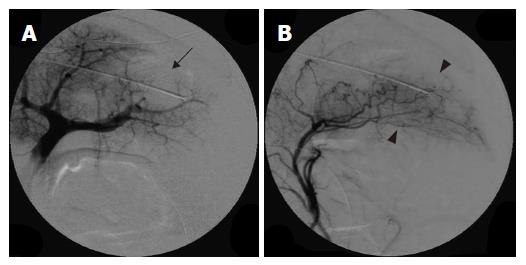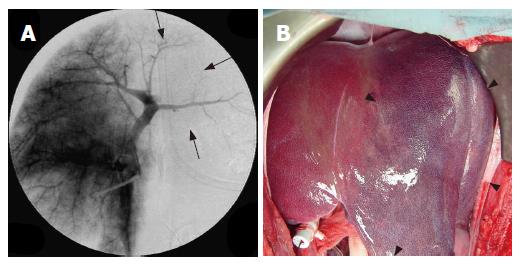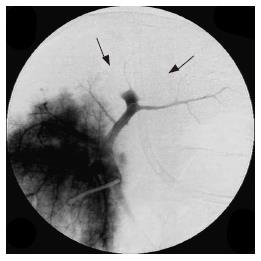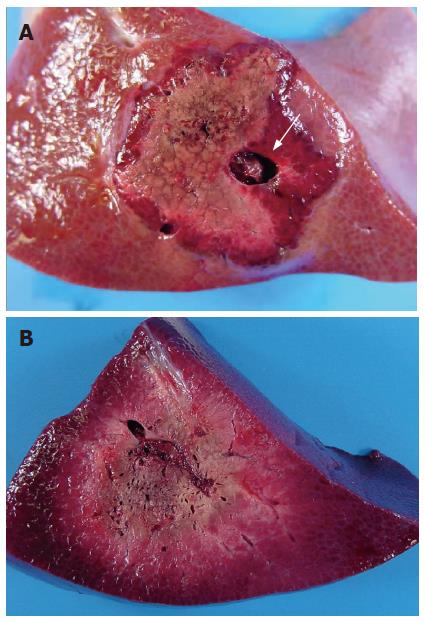Copyright
©2007 Baishideng Publishing Group Co.
World J Gastroenterol. May 28, 2007; 13(20): 2841-2845
Published online May 28, 2007. doi: 10.3748/wjg.v13.i20.2841
Published online May 28, 2007. doi: 10.3748/wjg.v13.i20.2841
Figure 1 Portography revealing occlusion of distal small portal vein branches in the ablated area (arrow) (A) and hepatic arteriography showing a compensatory increase in hepatic arterial blood flow in response to occlusion of the portal vein branches (arrow head) (B) in group with RFA alone.
Figure 2 Portography revealing a decrease of portal venous blood flow in the left lobe after LP-TAE before RFA (arrow) (A) and photograph of liver showing the dark red left lobe after LP-TAE before RFA (arrow head) (B).
Figure 3 Portography showing large branches of portal veins have disa-ppeared (arrow) after RFA following LP-TAE.
Figure 4 Region of necrosis avoiding large vessels (white arrow) in group with RFA alone (A), and showing ill-defined boundaries of coagulation necrosis and increase of the necrotic area in the group with RFA following LP-TAE (B).
- Citation: Nakai M, Sato M, Sahara S, Kawai N, Tanihata H, Kimura M, Terada M. Radiofrequency ablation in a porcine liver model: Effects of transcatheter arterial embolization with iodized oil on ablation time, maximum output, and coagulation diameter as well as angiographic characteristics. World J Gastroenterol 2007; 13(20): 2841-2845
- URL: https://www.wjgnet.com/1007-9327/full/v13/i20/2841.htm
- DOI: https://dx.doi.org/10.3748/wjg.v13.i20.2841
















